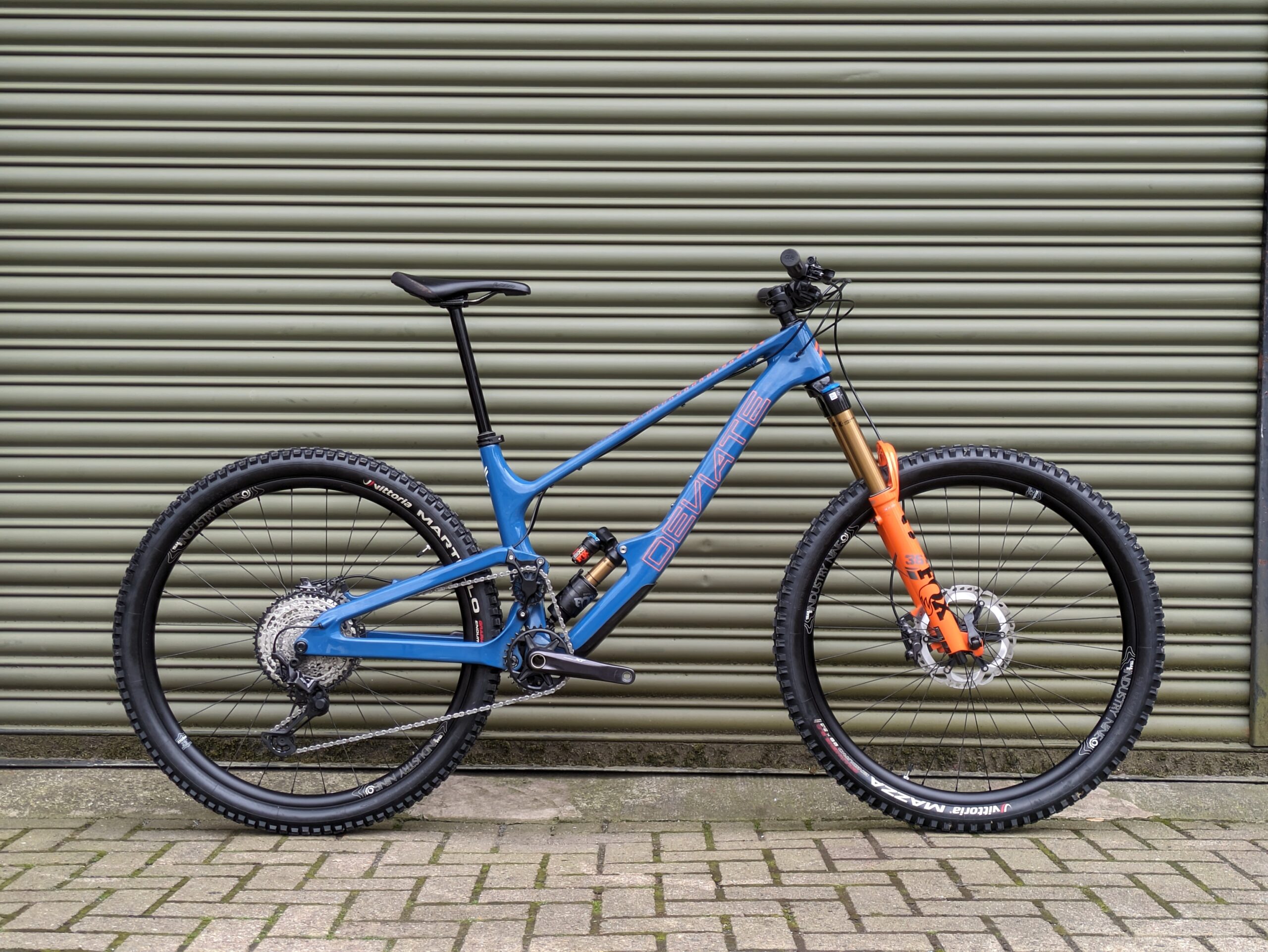Deviate Highlander II is pleasantly surprising. It’s a fantastic trail bike that’s easy to get to grips with and have a great day aboard.
- Brand: Deviate Cycles
- Product: Highlander II
- Price: £2,999 frame only (complete builds from £5,999)
- From: Deviate Cycles
- Tested by: Benji (XL) and Amanda (M) for Singletrack Magazine Issue 156
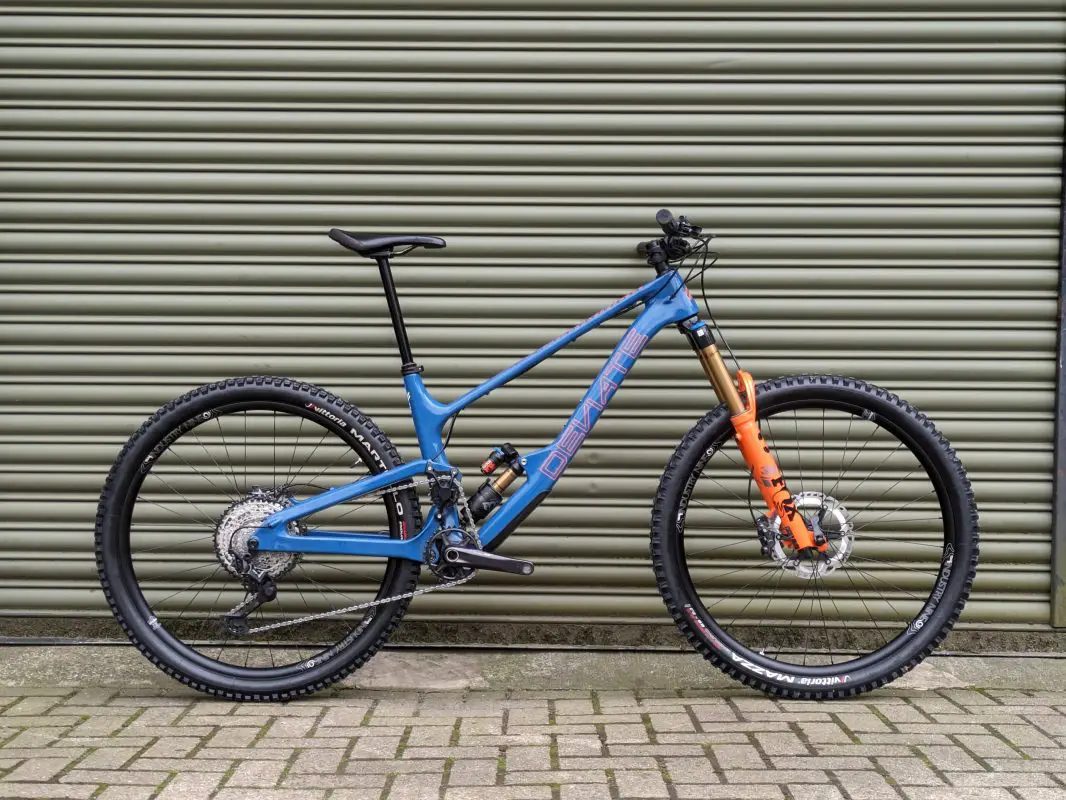
Pros
- Immense traction
- Great dynamic geometry/handling
- Incredible standover
Cons
- Lowish front end
- No alloy version
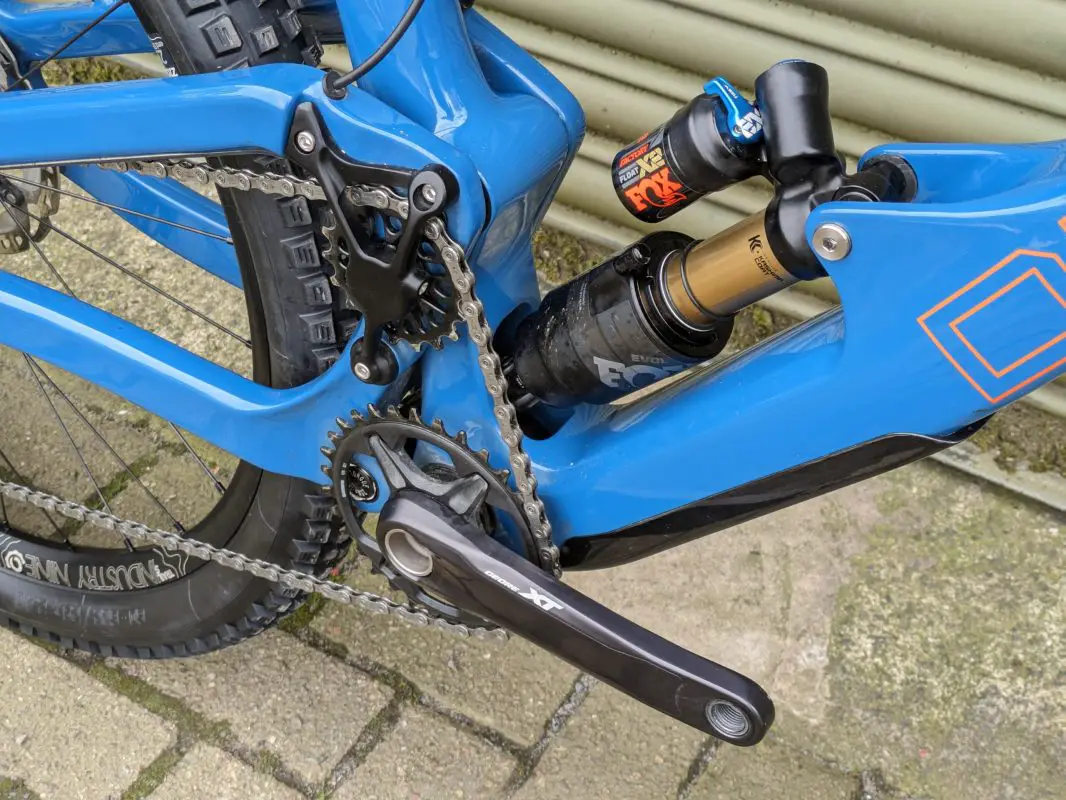
We were fans of the longer travel enduro flavoured Deviate Claymore, so much so that we awarded it an Editor’s Choice back in 2022. Hence we were really looking forward to having a rag around on this shorter travel Deviate Highlander II trail bike. Will it be quickening [sic] around a standard trail ride than the bruisy Claymore?
The Highlander II has 145mm of rear travel delivered by that eye-catching and conversation-starting idler-tastic high-pivot arrangement. I don’t want to get bogged down in explaining high pivot idler designs right now. Suffice to say that the most significant and genuinely on-trail detectable aspect of this design is the axle path is ascribes. Essentially it means the rear wheel moves in a similar plane to a suspension fork ie. backwards and upwards.
The idler’s job is to reduce the effect of drivetrain tension on the suspension actuation. An added bonus attribute of the idler that I detected during testing was that it seemed to really reduce the amount of bouncing around the top length of chain exhibits during rougher terrain. As well as being quieter, it’s noticeably calmer in general.
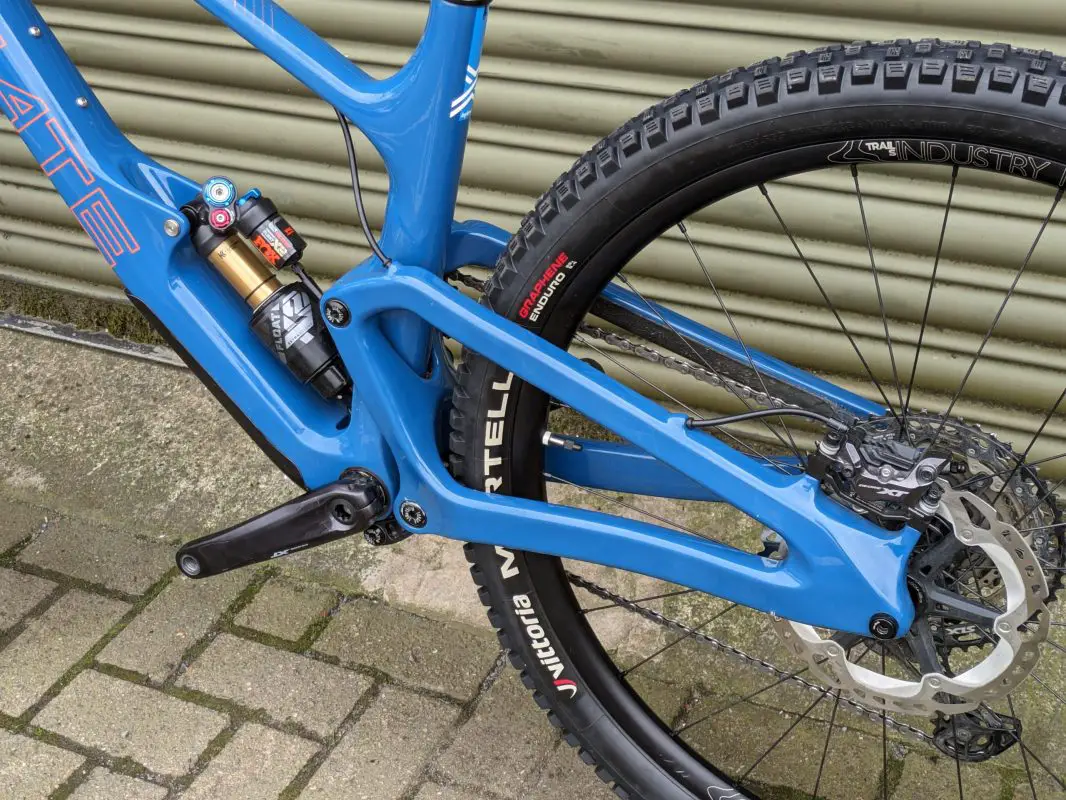
Enough about the suspension for now. Let’s delve into the frame itself. It’s a full carbon affair, as are all Deviate’s bikes, which goes some way to explaining the premium price tag. The swingarm is actually the same as used on the longer travel Claymore. While the 441mm chainstay length isn’t perhaps as on-trend lengthy* as some bikes of late, at least the stay length means you can use a standard 126-link chain (no need to buy two chains when it’s replacement time).
*this is static length, the stay length is longer at sag and grows to 463mm during compression.
Such practicality-minded design can be found elsewhere on the Highlander II. The pivot bearings are decent Enduro Max brand with double sealing. There’s also grease ports for purging/refreshing grease. Oh, and kudos to Deviate for some of the best internal/external cable routing we’ve seen. Much like the whole bike turned out to be: looks great, actually is great. The rear cabling runs externally-but-hidden under the top tube, before entering the swingarm internally. There’s also a set of accessory bosses unde the top tube.
In terms of protection, there’s a substantial bespoke chainstay protector and a downtube protector on the underside. The hanger is UDH (if you own a Deviate Highlander 1.0 and want to upgrade to a UDH compatible rear triangle, get in touch with Deviate).
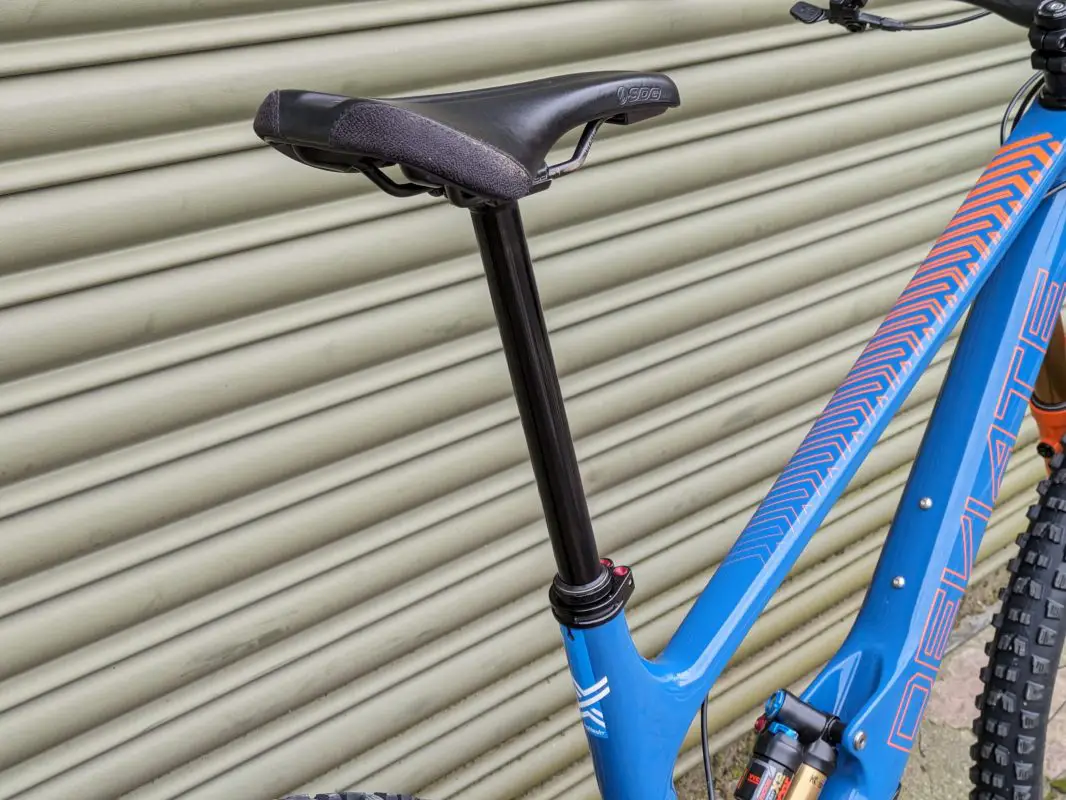
The idler is attached to the swingarm, sports 18 teeth and is impressively sturdy in use. As well as not noticeably moving at all even under heavy pedaling load (or making much noise), the idler was impressively in terms of how little drag it added to the drivetrain. I wouldn’t say it was ‘drag free’, just like jockey wheels aren’t, but it didn’t feel like it was sucking away significant amounts of watts from my efforts. A caveat here is that I didn’t encounter much in the way of wet and/or filthy conditions during the test period. In wetter or muddier conditions, if it was my bike I’d keep try to keep an eye on cleanliness and lube-ness of the idler.
In terms of geometry, the Highlander II is generally sound. It opts to use length as a stabilising factor as opposed to slack head angles and super low bottom bracket heights. Deviate’s geometry chart was possibly assembled based on the bike at sag; at rest, I found the head angle was slacker and the BB a bit higher. Neither are a bad thing.
Much like with the non-constant chain stay length, the dynamic geometry of the Highlander II meant for a ride that differed from expectations gathered from just looking at the geo chart. Basically, the bike rides longer between the wheels than you’d expect. Which again, is only a good thing in my opinion.
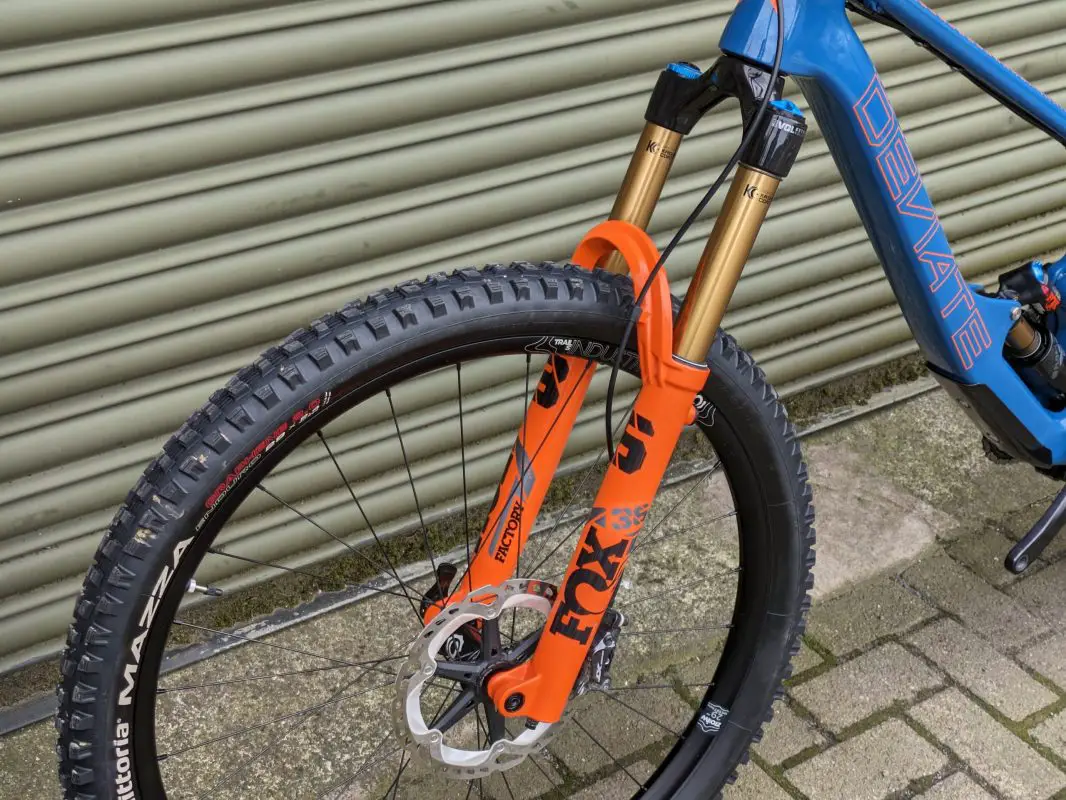
Although Deviate do now offer the Highlander II in complete builds, this test bike was a bit more of a one-off. With that in mind I’ll not go into too much irrelevant detail about it. In terms of relevant spec, all of the stuff from Shimano or OneUp was great. Although the OneUp riser bar was too low (20mm) for XL tastes. I quickly swapped in a 40mm rise bar and felt much more at home.
On the trails
It doesn’t ride like all high pivot hype tells you it will do. Namely, it doesn’t feel like it has bottomless travel or ‘rides like a magic carpet’. But conversely it doesn’t do any of the negative things that the keyboard naysayers claim. The idler doesn’t add any appreciable drag, you just need to clean it and lube the chain every ride (hardly a hardship). It doesn’t get weird or unpredictable as the wheelbase increases during rear suspension travel usage.
In the real world, the Highlander II pedals exceptionally well. And is possibly the most capable technical climbing bike you can get. Partly due to the geometry (lengthening rear stays, steep-ish 77° seat angle) and partly due to the suspension. It swallows small-to-mid size stuff at slow speeds amazingly well and also generally rides high in its travel (handy uphill).
It’s a very responsive bike under rider input on flatter terrain too. It is not a disinterested slugger. It zips along with great ease in fact. The 65° head angle may be on the not-that-slack side (it rides dynamically a bit slacker we feel) but the bike still has plenty of confidence and stability by virtue of reach, wheelbase and immense standover.
To return focus on the rear end, the chainstays change length as the suspension compresses/extends (440-460mm). You’d think this would lead to unpredictable handling. It really doesn’t. Quite the opposite in fact; it’s an exceptional cornering machine. Looking at the graphs of the leverage curve – and then glancing at the air shock – you’d expect midstroke support to be wholly absent. It isn’t. There’s hods of support and feel there.
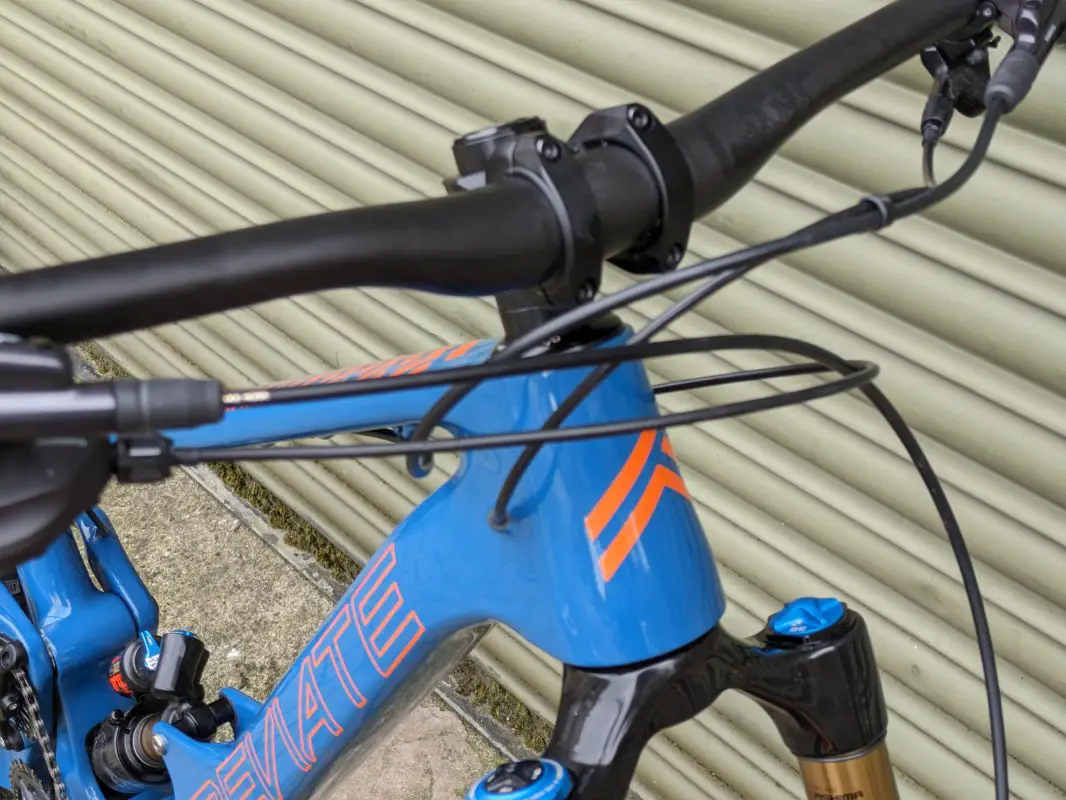
Overall
So there you have it. A pleasantly surprising bike. It’s not a diet enduro sled. It’s a fantastic trail bike that’s easy to get to grips with and anyone can hop on and have a great day aboard. With 145mm of high-pivot idler-tastic rear travel and a 160mm fork up front, this is a very modern trail bike. And it’s a flipping great one too. It’s great in ways you may not expect.

Deviate Highlander II specification
- Frame // Carbon Fibre, 145mm
- Shock // Fox Float X2, 210x55mm
- Fork // Fox 36 Float Factory, 160mm
- Wheels // Industry Nine Hydra Trail S
- Front Tyre // Vittoria Mazza
- Rear Tyre // Vittoria Martello
- Chainset // Shimano XT
- Brakes // Shimano XT
- Drivetrain // Shimano XT
- Stem // OneUp 35D, 42mm
- Handlebars // OneUp Carbon 35D, 800x20mm
- Grips // OneUp Lock-on
- Seat Post // OneUp V2, 240mm
- Saddle // SDG Lux
- Weight // 14.5kg
Geometry of our XL size
- Head angle // 65°
- Effective seat angle // 77°
- Seat tube length // 450mm
- Head tube length // 121mm
- Chainstay // 441mm
- Wheelbase // 1,283mm
- Effective top tube // 658mm
- BB height // 335mm
- Reach // 510mm

